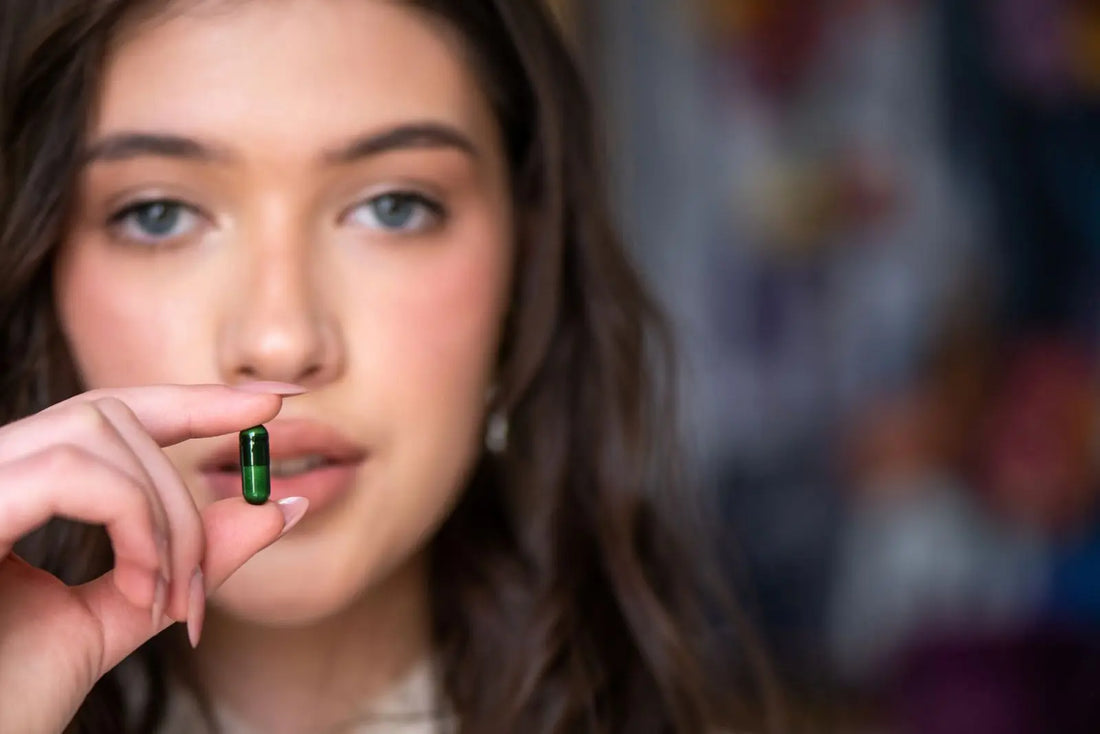
The skin is not just a surface, it is the body’s largest organ and a living interface between you and the world. Beyond appearance, it reflects hydration, immunity, structure, and cellular vitality. As we age, this dynamic system changes in subtle ways that influence not only how we look, but also how comfortable we feel in our skin.
Understanding these shifts, and how they respond to time, nutrition, sleep, and stress, opens the door to deeper skin health, a perspective that looks beyond quick fixes and toward foundational renewal.
A living barrier
The skin performs many roles at once. It shields against environmental stress, regulates temperature and fluid balance, participates in immune defense, and communicates with the nervous and hormonal systems. Its three interconnected layers work together like an intelligent shield:
- Epidermis, a renewing barrier of keratinocytes that protects against water loss and microbes.
- Dermis, a supportive layer rich in collagen, elastin, fibroblasts, and microcirculation.
- Hypodermis, the subcutaneous layer that cushions, insulates, and stores energy.
Over time, cell turnover slows and the production of collagen and glycosaminoglycans declines. Skin may appear thinner, drier, or less elastic, not because it is failing, but because it is adapting to new conditions.
Strength beneath the surface collagen and GAGs
Collagen accounts for much of the skin’s dry weight, and together with elastin it forms the dermal matrix, the supportive mesh produced by fibroblasts that keeps skin firm and flexible. Age, UV exposure, and internal stressors can accelerate collagen breakdown and reduce glycosaminoglycans, including hyaluronic acid, which binds water and cushions tissues.
Supporting fibroblast activity, and supplying the building blocks for collagen and GAG synthesis, helps reinforce this internal scaffolding and preserve smoothness, firmness, and comfort.
Hydration begins within
Topical moisturizers soften the surface, but lasting hydration is built from within. Hyaluronic acid is a natural molecule that can hold large amounts of water, filling the spaces between collagen fibers and maintaining plumpness and elasticity. As natural levels decline with age, targeted nutrition and lifestyle support can help restore hydration, especially when paired with lipids that strengthen the skin’s barrier.
Oxidative stress the silent accelerator
Daily life exposes skin to sunlight, pollution, and normal metabolism, all of which generate reactive oxygen species. These unstable molecules can damage lipids, proteins, and DNA, speeding collagen loss and triggering inflammation. The body’s antioxidant systems, including enzymes such as superoxide dismutase, help neutralize this stress, but they tend to weaken with age. Supporting antioxidant capacity helps maintain even tone, firmness, and healthy renewal.
Inflammation and the skin barrier
Low grade, chronic inflammation can quietly undermine the skin’s ability to repair. It weakens the barrier, disrupts collagen balance, and contributes to dryness, redness, and sensitivity. This cycle is often influenced by nutrition, stress, hormones, sleep, and the skin microbiome. Calming internal inflammation and caring for the barrier restore balance so the skin can recover its natural resilience.
Beauty as a system not a surface
True skin health is not about isolated fixes. It is a state in which collagen turnover, hydration, immune defense, and regeneration work in harmony. Age may change the rhythm, but with the right support the system remains remarkably adaptable. When we view skin not as something to fix, but as something to support, we create conditions for lasting radiance from the inside out.
Sources
- Shuster S, et al. The influence of age and sex on skin thickness, skin collagen and density. Br J Dermatol. 1975.
- Varani J, et al. Decreased collagen production in chronologically aged skin. Am J Pathol. 2006.
- Kawada C, et al. Ingested hyaluronan moisturizes dry skin. Nutr J. 2014.
- Zague V, et al. Collagen peptides modulate the metabolism of dermal fibroblasts. J Med Food. 2011.
- Pilkington SM, et al. Omega-3 polyunsaturated fatty acids, photoprotection and skin health. Dermatoendocrinol. 2011.
- Rinnerthaler M, et al. Oxidative stress in aging human skin. Biomolecules. 2015.
- Filaire E, et al. Age related changes in oxidative stress and SOD activity. Eur J Clin Invest. 2010.
- Wlaschek M, et al. Inflammaging of the skin, the impact of oxidative stress and inflammation. Exp Gerontol. 2021.
Important information
This article is intended for educational purposes only. It does not replace medical advice, diagnosis, or treatment. Always consult a qualified healthcare professional for personal guidance.
Published as part of the Wellness & Beauty Insights series by Health Royals, exploring the science behind lasting vitality and beauty from within.